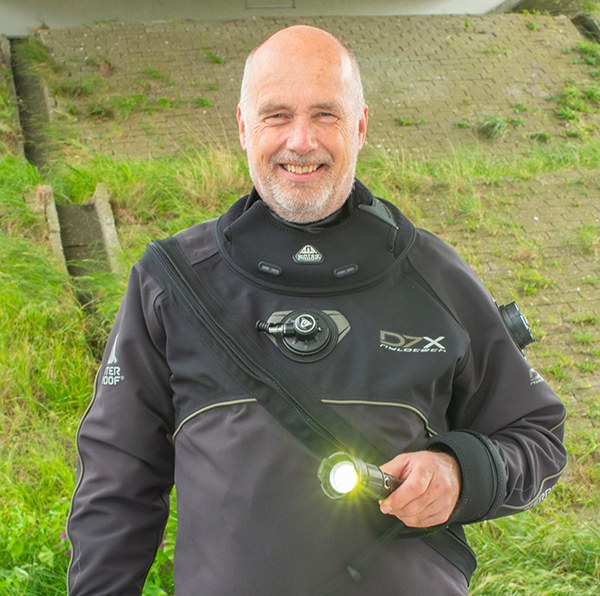Having received the new OrcaTorch ZD710 beam angle adjustable dive light at the end of May, what would be a better test than taking it along as my main dive light during the three days of diving with our dive club mid-June?
In our dive club – New Lake Divers – in Amsterdam (www.newlakedivers.nl), the Netherlands, as part of our numerous dive activities, we also organize twice a year a long (Friday to Sunday) dive weekend in Zeeland, one of the provinces in the Netherlands. Zeeland has estuary waters, both with tidal changes (Oosterschelde) as well as without tidal changes (Grevelingen). So, both areas provide a very nice change to our normal fresh water dives around Amsterdam. Obviously, there is a significant difference in aquatic life in Zeeland compared to the fresh water lakes close to Amsterdam.

For those of you who have not had the pleasure to dive in the Netherlands: the sea water is not blue like in the (sub)tropics, but more green-brown and there is normally a lot of sediment and algae in the water. Visibility is considered good when above 2 meters and excellent when we reach something like 5 meters. But it also implies that there is plenty of food in the water column, and therefor aquatic life is abundant. The dominant color is however somewhere in the region between dark white and light to dark brown.
Nevertheless, in 2015 the world championship underwater photography was organized in that very same province of Zeeland. And indeed, when looking closer, there is much to find. So, it isn’t all dark and grey and with sufficient training there is a lot to discover.
The previous sketches the context, that is without lots of driving between the different dive sites, climbing sea walls (our famous Dutch dikes) with full dive gear, and unfortunately, summer isn’t doing its best yet, so sometimes strong winds and rain … Still, we’re out diving, having lots of fun between the dives, so what else do you want?
Taking along the ZD710 dive light was specifically interesting to see whether it would work for two consecutive dives, testing it as main dive light for making underwater photos and see how it would perform in water with varying visibility. For the photos I took along a very old (probably some 15 years (?)) 8 mega pixel compact camera from my wife, as my own underwater housing is currently with the dealer for maintenance. Taking it along more for fun than expecting serious photos, but you know, you’ll be amazed to what you will find when you don’t have a camera with you! (having said that, wouldn’t that be just the argument NOT to take a camera??)
Anyway, back to the OrcaTorch ZD710. Specifically with varying under water conditions, it’s very nice to be able to choose between a wide and narrow beam. My first buddy did not have much experience, and neither did she have a torch for herself, so it’s nice to use the wide beam and be able to view a wider area; not only in front of myself, but also in front of my buddy. While wanting to point out a small critter like a nudibranch, narrowing the beam will shift the focus to exactly the right spot.

My second dive was more focused on making photos. The compact camera is equipped with a build-in flash and the housing has a diffuser, but in murky water that will only result in lots of dust particles in the photo, covering the subject of the photo. With the wide beam of the ZD710, I had the possibility to put the light to the side of the camera and it does provide sufficient light for making photos. Obviously, having the dive light physically attached to the side of the camera and being able to handle the camera with two hands would have been better, but remember, the photos were just for fun.
Finally, as to the ability of the ZD710 to provide light during two consecutive dives: yes, indeed it can, but approximately half way the second dive the indicator in the switch turns from green to red. That is, with the ZD710 burning at full power all of the time. And that’s not even necessary in our murky water.
In all a good dive companion!

Author: Frank Lamé is in his free time a Master Instructor and part of his dives are educational dives. When overseas, Frank always dives together with his video camera, capturing the marine life (www.youtube.com/user/franklame). A number of his videos have been broadcasted, among which by the BBC.

